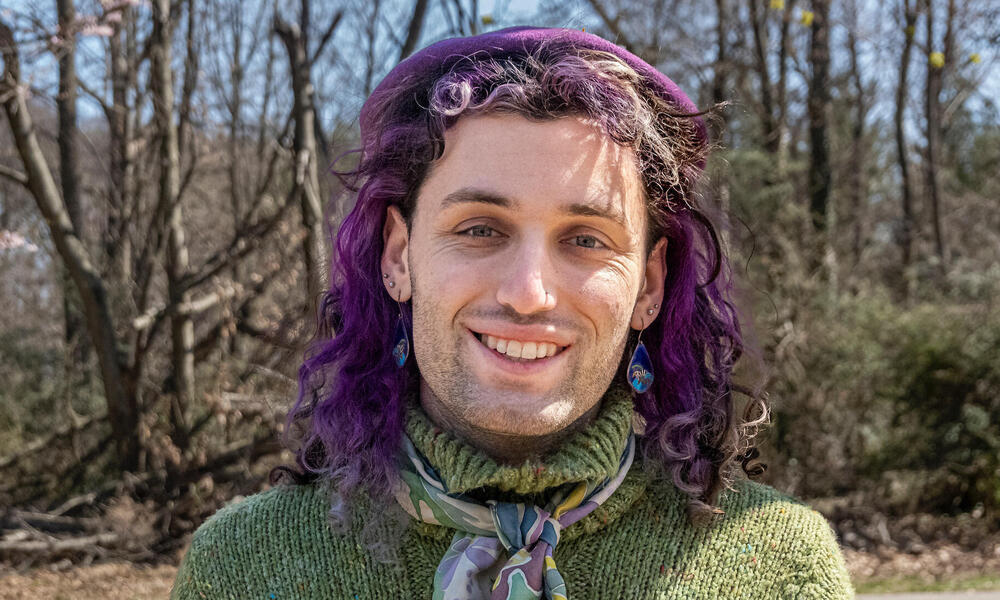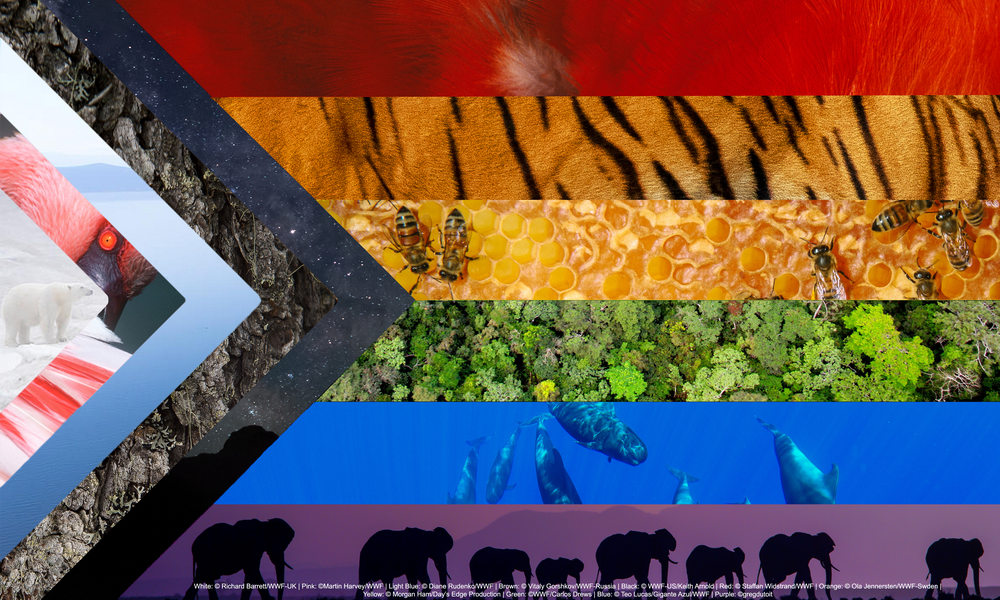WWF shares personal stories from staff about their connections with nature. Daniel Vernick has worked at WWF for 4 years. They are a member of We’re Here: LGBTQ+ at WWF.
My feet rest in the soft grass, damp soil, and wiry pine needles on top of a hill. I feel safe here, grounded in the powerful earth below me. Blue jays chat gently, and I absorb rays of evening spring sunshine. The golden light illuminates lush fields below. My back is supported by a burly maple tree, its branches rustling in the breeze as its delicate green buds begin to unfurl. It doesn’t matter what I look like, whether my clothes appear feminine or masculine. I am who I am, and the trees are who they are, existing on this small, special planet that we all call home. It was in this space, at Drumlin Farm in Massachusetts, rooted in nature and community, that I gained the courage to grow into the person I am today.
I identify as genderqueer and transfeminine. That means that I feel my authentic self when I don’t subscribe to the male gender expectations that society assigned to me at birth. By stepping outside of those pressures and embracing femininity, I live life as my happiest, fullest self. Coming out—that is, openly embracing the person I truly am—was the single most transformative and positive experience of my life. I am enormously thankful to be surrounded by friends, role models, and communities who lift me up for who I am.

